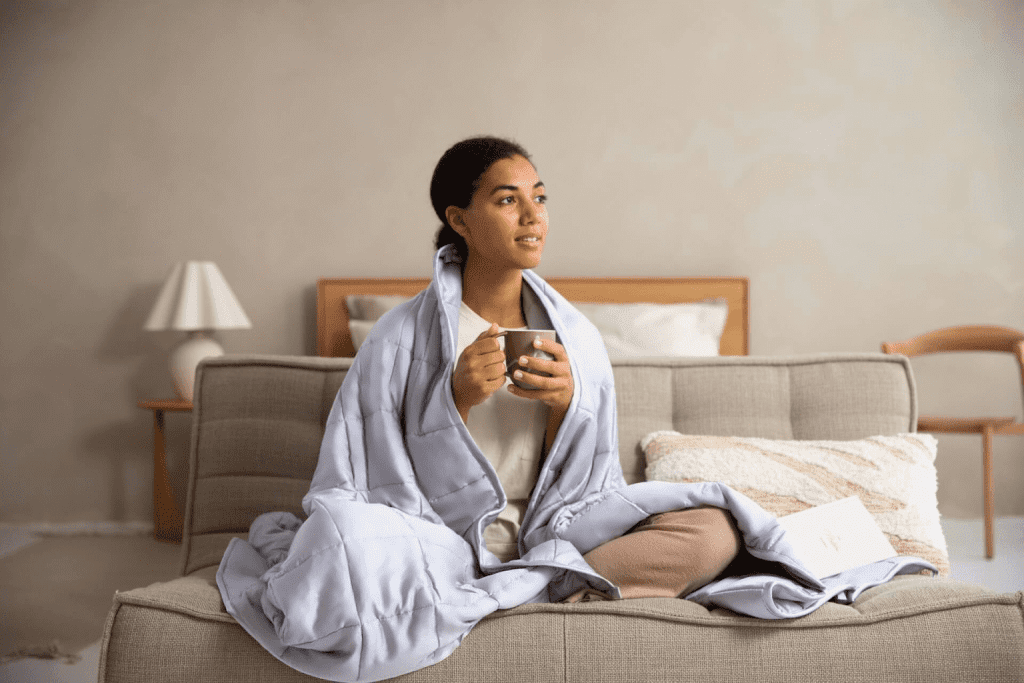Setting your air conditioner to 26°C at night might sound comfortable, but it may not be the best choice for your comfort, health, or energy bills. With a few tweaks to the nighttime AC settings, you could not only improve your sleep quality but also reduce energy consumption and save money. Here’s why you should consider adjusting the thermostat and some suggestions for better temperature settings at night.

1. Body Temperature Drops Naturally During Sleep
As you sleep, your body undergoes various changes, including a natural drop in body temperature. This dip signals your body to rest and helps regulate your sleep cycle. When the room temperature is set too low or too high, it can interfere with this natural process and make it harder for you to fall and stay asleep.
Setting your AC to 26°C may feel comfortable during the day, but as your body temperature falls at night, this setting can feel too warm. A slightly cooler environment supports better sleep by aligning with your body’s need to cool down. Keeping the room slightly cooler than 26°C can help promote uninterrupted sleep.
2. Higher Energy Consumption at Lower Temperatures
Maintaining your air conditioner at a constant 26°C may seem moderate, but it requires the AC unit to work harder, especially when the outside temperature is cooler at night. Running your AC all night at this setting increases electricity consumption and, ultimately, your utility bills. In fact, energy experts recommend setting your thermostat to a higher temperature at night to save on energy costs.
Raising the temperature to around 27°C to 28°C can reduce your energy usage significantly. This small adjustment will make your AC work less, meaning you’re not only saving on energy but also extending the lifespan of your unit.
3. Risk of Health Issues from Too Much Cooling
Keeping your bedroom cooler at night can enhance sleep, but setting the AC too low might lead to unintended health consequences. Overly cool air can cause dryness in your skin, nasal passages, and throat, leading to irritation and an increased risk of respiratory problems. Prolonged exposure to chilled air overnight can lower your immune system’s defenses, making you more susceptible to catching colds or other illnesses.
To keep your room comfortably cool without compromising your health, try setting the temperature a little higher than 26°C and consider using a humidifier to maintain optimal air moisture levels.
4. Low Humidity Levels from Extended AC Use
One of the side effects of running your AC at cooler settings is that it reduces the humidity in the air. A setting of 26°C or lower can make the air too dry, which may lead to dry skin, irritated eyes, and even dehydration if you’re not drinking enough water. Dry air can be particularly uncomfortable for those who wear contact lenses or have sensitive skin.
An AC setting of around 27°C to 29°C, especially if paired with a fan to improve airflow, can help you avoid excessively dry air while still keeping your room cool enough for a comfortable night’s sleep.
5. Cooler Temperatures Can Disrupt Sleep Quality

While a cool room is generally ideal for sleep, going too cool can be counterproductive. If the room temperature falls too low, your body may start to shiver, which can wake you up or lead to restless sleep. Even at 26°C, the AC might make you feel a chill as your body temperature dips, disrupting your sleep cycle and making you more likely to wake up during the night.
Most sleep experts agree that a nighttime temperature of around 27°C to 29°C is more conducive to quality sleep, as it’s warm enough to prevent shivering but cool enough to avoid overheating.
Recommended Nighttime Temperature Settings for Optimal Comfort
So, what temperature should you set the air conditioner to at night for the best sleep and energy efficiency? Here are some general guidelines to follow for a balance of comfort and cost-effectiveness:
- 27°C to 29°C: This range is ideal for sleeping, as it complements the natural drop in body temperature and conserves energy by reducing AC usage.
- Fan Assistance: If you’re concerned about feeling too warm, consider using a fan in combination with your AC. A fan can help circulate the cool air, allowing you to raise the thermostat while still feeling comfortable.
- Use a Programmable Thermostat: Set your thermostat to a warmer temperature as you fall asleep, and program it to gradually cool down throughout the night if needed. A programmable thermostat gives you the flexibility to adjust the temperature according to your sleep cycle.
Benefits of Higher Nighttime AC Settings
There are multiple advantages to keeping your AC set higher at night:
- Energy Savings: By raising the temperature even a few degrees, you can see significant reductions in your energy bill.
- Improved Health: Avoiding excessively cool temperatures can reduce the risk of respiratory issues, dry skin, and other cold-related health concerns.
- Increased Comfort: A warmer setting prevents the body from experiencing a chill, which promotes uninterrupted sleep and aligns with the body’s natural cooling rhythm.

Tips for Staying Cool Without Overusing the AC
If you’re concerned about staying cool but want to avoid the potential drawbacks of keeping the AC at 26°C, here are some additional strategies:
- Invest in Breathable Bedding: Light, breathable materials like cotton or linen sheets can help regulate body temperature more effectively than heavier fabrics.
- Sleep with Light Clothing: Wearing lighter, breathable sleepwear will allow your body to cool naturally, even with a slightly higher room temperature.
- Use Blackout Curtains: During the day, keep blackout curtains closed to prevent the sun from heating your room, so your AC doesn’t have to work as hard when night falls.
- Stay Hydrated: Drinking water throughout the day helps your body stay cool and prevents dehydration caused by dry indoor air.
Conclusion: Adjusting for Comfort and Efficiency
Setting your air conditioner to 26°C might seem like the perfect balance, but it may not be the best choice for your nighttime comfort, health, or energy savings. By raising the thermostat just a bit and exploring other ways to stay cool, you can optimize your sleep environment, reduce your energy bill, and enjoy a restful night’s sleep. Try adjusting your AC settings tonight and experience the difference that a few degrees can make!


